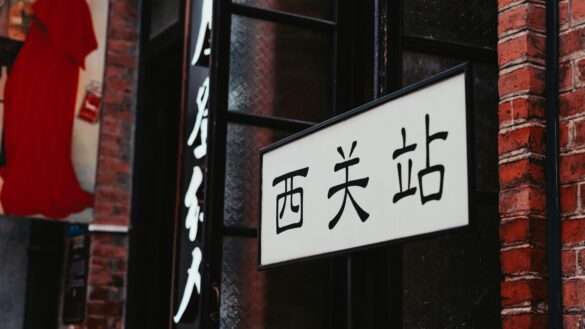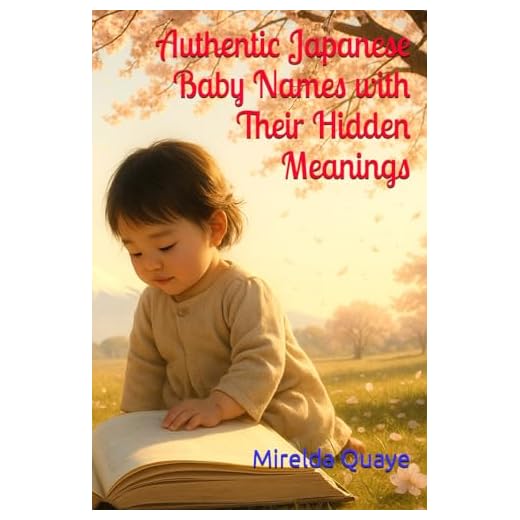Japanese Names: Meanings, Traditions, and Creative Inspiration
According to a recent Crunchyroll survey, 87% of anime fans express genuine interest in learning the meanings behind Japanese names, while 42% of Western fiction writers actively research cultural naming conventions to enhance their storytelling authenticity.
The fascination with Japanese names has reached unprecedented heights in our interconnected world. From the surge of anime and manga popularity to the growing interest in Japanese culture among travelers and creators, authentic Japanese names have become more than just identifiers—they’re gateways to understanding a rich cultural heritage. According to a recent Crunchyroll survey, 87% of anime fans express genuine interest in learning the meanings behind Japanese names, while 42% of Western fiction writers actively research cultural naming conventions to enhance their storytelling authenticity.
Whether you’re crafting the next great fantasy novel, developing characters for your RPG campaign, or simply curious about the cultural significance behind your favorite anime character’s name, understanding Japanese naming traditions opens doors to deeper cultural appreciation. This comprehensive guide will explore the intricate world of Japanese names, from their structural foundations to their modern applications in entertainment and creative projects. Discover your own Japanese name with our interactive generator!
How Japanese Names Are Structured: The Foundation of Identity
Japanese names operate on fundamentally different principles than Western naming systems, creating a complex tapestry of meaning, sound, and cultural significance. The most immediately noticeable difference lies in the naming order: Japanese names traditionally place the family name (surname) first, followed by the given name. This structure reflects the cultural emphasis on family and social hierarchy that permeates Japanese society.
The backbone of Japanese names lies in kanji—Chinese characters adopted into Japanese writing that carry both meaning and multiple pronunciation possibilities. A single kanji character can have several readings: the on’yomi (Chinese-derived reading) and kun’yomi (native Japanese reading), creating layers of interpretation. For example, the kanji 美 can be read as “mi” or “bi,” both meaning “beautiful,” but each reading carries slightly different nuances and cultural associations.
This complexity extends to the relationship between written form and pronunciation. Parents might choose kanji for their visual meaning while selecting an entirely different pronunciation, creating names that work on multiple levels. The name 心愛 could be read as “Kokoa” (like “cocoa”), combining the kanji for “heart” and “love” with a modern, Western-influenced pronunciation.
Gender distinctions in Japanese names often manifest through specific kanji choices and name endings. Traditional feminine names frequently incorporate characters representing beauty, flowers, or virtues, while masculine names might emphasize strength, achievement, or natural elements. However, modern naming trends increasingly blur these traditional boundaries, with parents choosing more gender-neutral options or unconventional kanji combinations.
The poetic nature of Japanese names cannot be overstated. Many names draw inspiration from classical literature, seasonal phenomena, or philosophical concepts. A name like 春花 (Haruka) combines “spring” and “flower,” evoking images of cherry blossoms and renewal. This poetic tradition means that Japanese names often tell stories or express parents’ hopes and dreams for their children.
Popular Japanese Names and Their Cultural Significance
According to the Japanese Ministry of Health 2023 statistics, the top 10 Japanese names account for approximately 15% of all births annually, showing both the popularity of certain choices and the diversity of naming preferences.
Among the most popular boys’ names, 蓮 (Ren) consistently ranks highly, meaning “lotus”—a flower symbolizing purity and enlightenment in Buddhist tradition. 大翔 (Hiroto) combines “large” and “fly,” expressing parents’ wishes for their child to soar to great heights. 陽翔 (Haruto) merges “sun” with “fly,” creating imagery of bright, ascending energy.
For girls, 陽菜 (Hina) remains extremely popular, combining “sun” and “vegetables/greens,” suggesting brightness and natural growth. 凛 (Rin) means “dignified” or “severe,” reflecting parents’ hopes for a strong, principled daughter. 結愛 (Yua) connects “tie/bind” with “love,” expressing the binding power of affection.
Seasonal naming traditions play a crucial role in Japanese culture. Spring names might incorporate 桜 (sakura – cherry blossom), 春 (haru – spring), or 花 (hana – flower). Summer names could include 夏 (natsu – summer), 海 (umi – ocean), or 太陽 (taiyou – sun). These seasonal connections reflect the Japanese cultural emphasis on living in harmony with natural cycles.
Historical and mythological influences also shape naming trends. Names like 龍 (Ryuu – dragon) connect children to powerful mythological creatures, while 武 (Takeshi – warrior) links them to samurai traditions. These connections provide children with cultural anchors and aspirational identities.
Regional variations add another layer of complexity to Japanese naming. Northern regions might favor names reflecting snow and mountains, while coastal areas might prefer ocean-themed names. Urban areas tend toward more modern, sometimes Western-influenced names, while rural regions often maintain traditional naming patterns.
The concept of 画数 (kakusuu) – stroke count – influences many naming decisions. Based on numerological beliefs, parents calculate the stroke count of proposed names to ensure favorable fortune. This practice demonstrates how practical considerations interweave with spiritual beliefs in Japanese naming culture.
Japanese Names in Entertainment Media: Storytelling Through Identity
The strategic use of names in Japanese entertainment media reveals sophisticated storytelling techniques that Western creators increasingly adopt. As legendary filmmaker Hayao Miyazaki once stated, “Names in storytelling should carry the weight of character destiny.” This philosophy permeates anime, manga, and video games, where names function as narrative devices rather than mere labels.
Character names in anime and manga often employ puns, wordplay, and symbolic meanings that enhance storytelling. In “Naruto,” the protagonist’s name references narutomaki (a type of fishcake), connecting him to his favorite food ramen while the spiral pattern symbolizes his journey’s cyclical nature. Sailor Moon creator Naoko Takeuchi explained, “Every character name I choose reflects their inner nature and role in the story,” evident in names like Usagi Tsukino (Rabbit of the Moon) for the moon-powered heroine.
Genre conventions strongly influence naming patterns in Japanese media. Shonen manga targeting young males often feature names with strong, action-oriented kanji like 勇 (yuu – courage) or 力 (chikara – strength). Shojo manga for young females might emphasize beauty, nature, or emotional concepts through names incorporating 美 (mi – beauty) or 愛 (ai – love). Horror series frequently use names with dark or ominous readings, while romantic comedies favor cute, approachable names.
The practice of 当て字 (ateji) – using kanji for their sound rather than meaning – allows creators to craft names that work on multiple levels. A character might have a name that sounds modern or Western when spoken but uses traditional kanji with entirely different meanings, creating layers of interpretation for different audiences.
Dragon Ball creator Akira Toriyama noted, “The best character names are memorable and hint at personality traits.” His vegetable-themed Saiyan names (Vegeta, Kakarot, Raditz) demonstrate how creative naming systems can enhance world-building while maintaining internal consistency.
Video games present unique naming challenges, often requiring names that work across multiple languages and cultures. Japanese RPGs frequently use names that sound exotic to Western ears while maintaining cultural authenticity. This cross-cultural naming approach has influenced global gaming culture and character creation trends.
Choosing Authentic Japanese Names for Creative Projects
Selecting appropriate Japanese names for creative projects requires balancing cultural authenticity with narrative function. The key lies in understanding not just what names mean, but how they function within Japanese cultural contexts and how they’ll be perceived by both Japanese and international audiences.
Research forms the foundation of authentic name selection. Quality resources include the Complete Guide to Japanese Names and Meanings, which provides comprehensive cultural context alongside name listings. Understanding the historical periods, social classes, and regional variations relevant to your story helps narrow appropriate choices. If you’re looking for creative name ideas or want to see the meanings and kanji, try our interactive Japanese Name Generator.
Consider the character’s background when selecting names. A modern Tokyo teenager might have a trendy name with unusual kanji readings, while a traditional samurai character requires names reflecting historical naming conventions. Family background, social status, and regional origin all influence realistic name choices.
The relationship between given names and family names requires careful attention. Japanese surnames often indicate geographical origins, occupations, or clan affiliations. Matching appropriate surnames with given names creates believable character identities. Common mistakes include pairing modern given names with ancient surnames or mixing regional naming conventions inappropriately.
Pronunciation considerations affect how names function in your creative work. Names with difficult or unusual pronunciations might hinder reader engagement, while overly simple names might lack cultural authenticity. Strike a balance by choosing names that feel authentically Japanese while remaining accessible to your target audience.
Cultural sensitivity extends beyond mere accuracy to respectful representation. Avoid names associated with specific religious or spiritual traditions unless relevant to your story. Similarly, be cautious with names that might have negative connotations or historical baggage that could inadvertently offend Japanese audiences.
Essential Tips for Authentic Japanese Name Selection
- Research Historical Context: Match names to appropriate time periods and social contexts. Medieval settings require period-appropriate names, while modern stories can embrace contemporary naming trends. The Historical Dictionary of Japanese Names provides excellent historical context.
- Understand Kanji Relationships: Learn how different kanji combinations create meaning layers. Names using nature kanji (山 – mountain, 川 – river) suggest different personalities than names using virtue kanji (誠 – sincerity, 正 – justice).
- Consider Pronunciation Flow: Test how names sound when spoken aloud. Names should flow naturally within your story’s dialogue and feel comfortable for readers to pronounce mentally.
- Verify Cultural Appropriateness: Research whether chosen names have specific cultural, religious, or social associations that might be inappropriate for your character or story context.
- Balance Authenticity with Accessibility: Choose names that feel genuinely Japanese while remaining pronounceable and memorable for your target audience.
Common Mistakes to Avoid When Using Japanese Names
- Mixing Incompatible Elements: Combining modern given names with ancient surnames, or mixing naming conventions from different regions or time periods creates unrealistic character identities that break immersion for knowledgeable readers.
- Ignoring Cultural Significance: Using names with religious, spiritual, or cultural significance without understanding their implications can inadvertently create offensive or nonsensical character identities.
- Overusing Popular Anime Names: Relying heavily on names from well-known anime and manga creates derivative characters that lack originality and may trigger unwanted comparisons in readers’ minds. Find unique name ideas here.
- Misunderstanding Gender Conventions: While modern Japanese names increasingly blur gender lines, traditional naming patterns still matter for historical or traditional settings. Research appropriate gender conventions for your story’s context.
- Neglecting Pronunciation Guidance: Failing to provide pronunciation guidance for complex names can frustrate readers and create barriers to character connection and story immersion.
Conclusion
Japanese names represent far more than simple identifiers—they’re windows into a rich cultural heritage that values meaning, beauty, and connection to nature and family. Whether you’re creating characters for your next novel, developing personas for gaming, or simply satisfying curiosity about Japanese culture, understanding these naming traditions enriches both your creative work and cultural appreciation. By approaching Japanese names with respect, research, and authentic understanding, you unlock powerful tools for storytelling while honoring the cultural wisdom embedded in this ancient naming tradition.

